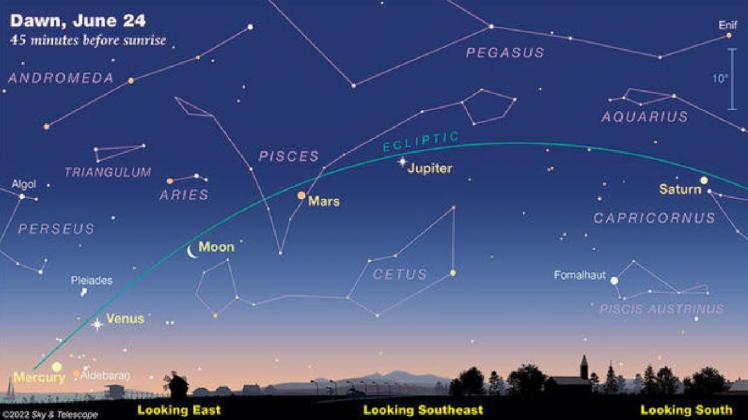Sky & Telescope, the science magazine published by the American Astronomical Society, states that it is not uncommon to see three planets close together; five lined up in order, however, is a rarity. All five planets were spotted on June 3 and 4 but could only be seen with binoculars for half an hour. On Friday, June 24, they will be easier to view. The magazine says the best time to see the lineup on June 24 is 45 minutes before sunrise on the eastern horizon.
As the distance between Mercury and Saturn increases, it's getting easier to spot Mercury, making it easier to see all five brightest planets as well. Diana Hannikainen, observing editor of Sky & Telescope, told CBS News that the sky on the morning of the 24th "will present a delightful sight" because the waning crescent moon will also join the procession between Venus and Mars.
CBS News added that the only way to see the uncommon site at its best is to get up early. "The perfect view will occur about an hour before sunrise, and no telescope is needed.” The news station says to pick a night with low haze and little or no cloud cover to get the best view. Also, find a spot with a clear view on the east or the southeast horizon and one with as little artificial light pollution as possible.
Taking a little of the excitement out of the rarity is livescience. com's statement that the visible planets are not actually lined up in a row in space. "A viewer looking at the solar system from above would see a random smattering of planets that just happened to be to one side of the Sun. From Earth, though, a lack of depth perception makes it appear that all the planets are next to one another."
Nonetheless, it sounds like quite a sight to see.



